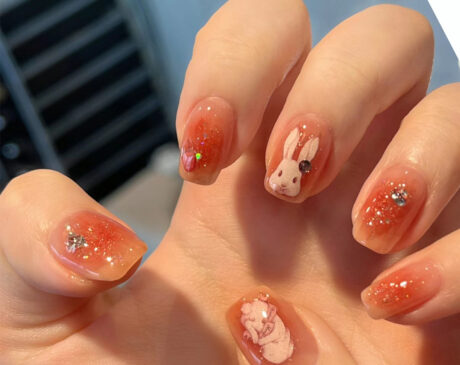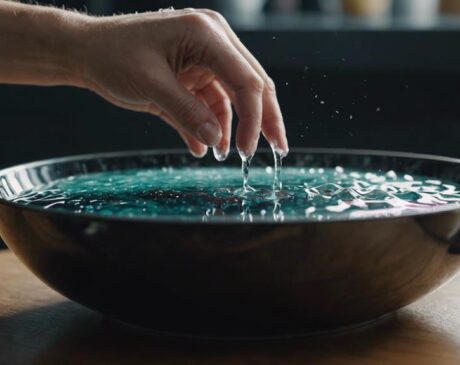What Happens if You Don't Cure Gel Nail Polish?
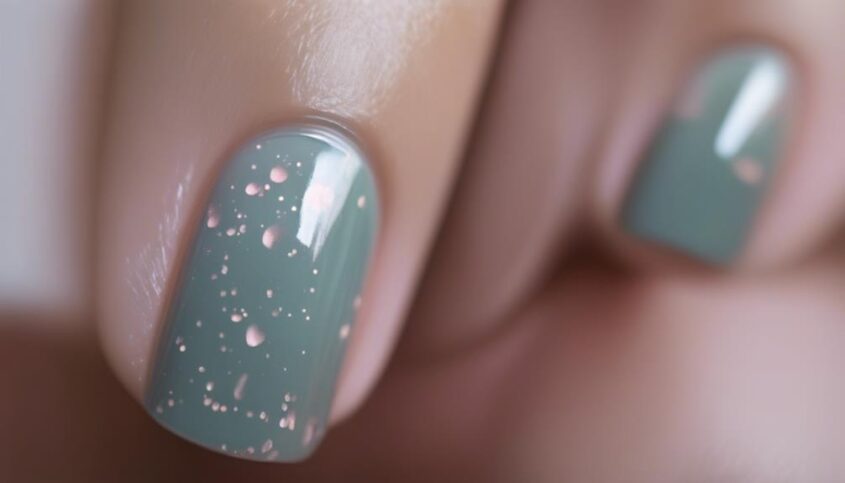
If you don't cure gel nail polish, you risk issues like tackiness, chipping, and impacts on nail health. Skipping proper curing may lead to early peeling, color fading, and vulnerability to damage. Your manicure won't last as long or look as vibrant. The gel may attract bacteria, risking infections. To avoid these, apply thin layers, use a quality lamp, and seal edges properly. Plus, correct removal is crucial for nail health. Remember, taking these steps ensures a longer-lasting, healthier manicure with a professional finish.
Key Takeaways
- Risk of skin irritation, chipping, and negative impact on nail care routine.
- Shortened wear time, peeling, and vulnerability to damage without proper curing.
- Color fading, rough texture, and easy chipping if not cured correctly.
- Increased susceptibility to chips, cracks, and infections due to uncured gel polish.
- Elevated risk of allergies, bacterial growth, and adverse skin reactions without correct curing.
Potential Risks of Uncured Gel Polish
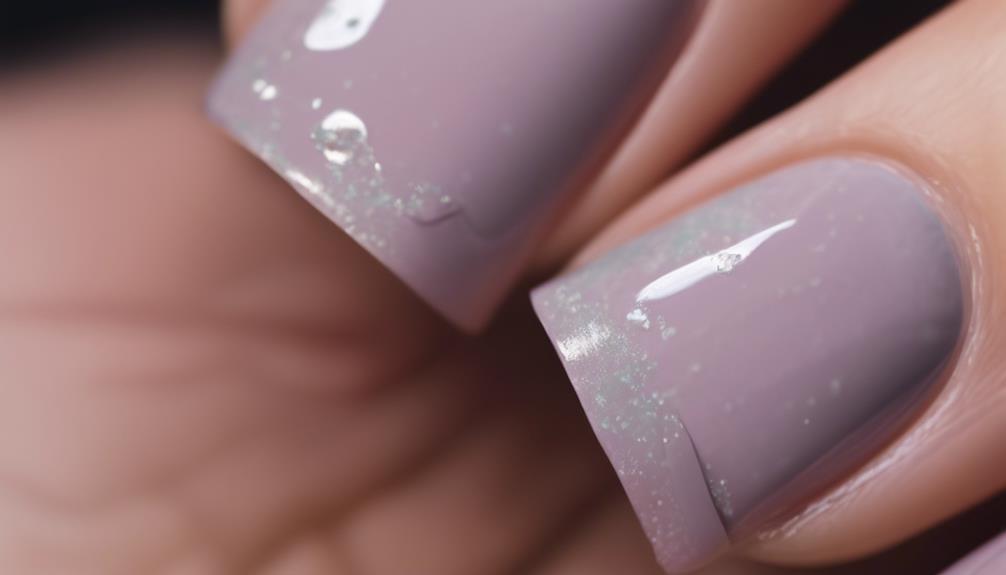
If you leave gel nail polish uncured, the potential risks include skin irritation and poor adhesion. When gel polish is not properly cured under a UV or LED lamp, it can remain tacky and lead to skin irritation if not removed promptly. This can be uncomfortable and may cause redness or itching, which is not ideal for your nail care routine. Additionally, uncured gel polish tends to have poor adhesion to the nail surface, resulting in a manicure that is more prone to chipping and lifting. This can be frustrating, especially when you're aiming for a flawless and long-lasting manicure.
To avoid these risks, it's crucial to ensure that your gel polish is fully cured according to the manufacturer's instructions. Proper curing not only enhances the durability of your manicure but also reduces the likelihood of skin irritation. By prioritizing the curing process, you can enjoy a beautiful and lasting gel manicure without compromising on quality or safety.
Impact on Longevity of Manicure
If you skip curing gel nail polish properly, you may notice the polish peeling off sooner than expected. This can lead to a shorter wear time for your manicure, ultimately affecting its longevity. Ensuring the gel polish is adequately cured is essential for maintaining a lasting and flawless manicure.
Nail Polish Peeling
When gel nail polish begins to peel, it significantly reduces the longevity of your manicure. Peeling not only affects the aesthetic appeal but also weakens the overall durability of the gel polish. To highlight the impact of nail polish peeling, consider the following comparison table:
| Issue | Consequence |
|---|---|
| Nail Polish Peeling | Reduces longevity of manicure |
| Affects Durability | Weakens the strength of gel polish |
| Aesthetic Appeal | Diminishes the overall look of the manicure |
Shorter Wear Time
To maximize the longevity of your gel manicure, ensuring a longer wear time is essential. If you neglect proper curing, your gel polish may not last as long as expected. Here are some reasons why shorter wear time can occur:
- Incomplete Bonding: Inadequate curing can lead to poor adhesion, causing the polish to lift sooner.
- Vulnerability to Damage: Uncured gel polish is more susceptible to chipping and peeling, shortening its lifespan.
- Less Resilience: Proper curing enhances the durability of the manicure, making it less likely to wear off quickly.
- Impact on Shine: Inadequately cured gel polish may lose its luster faster, affecting the overall appearance of your nails.
Changes in Color and Texture
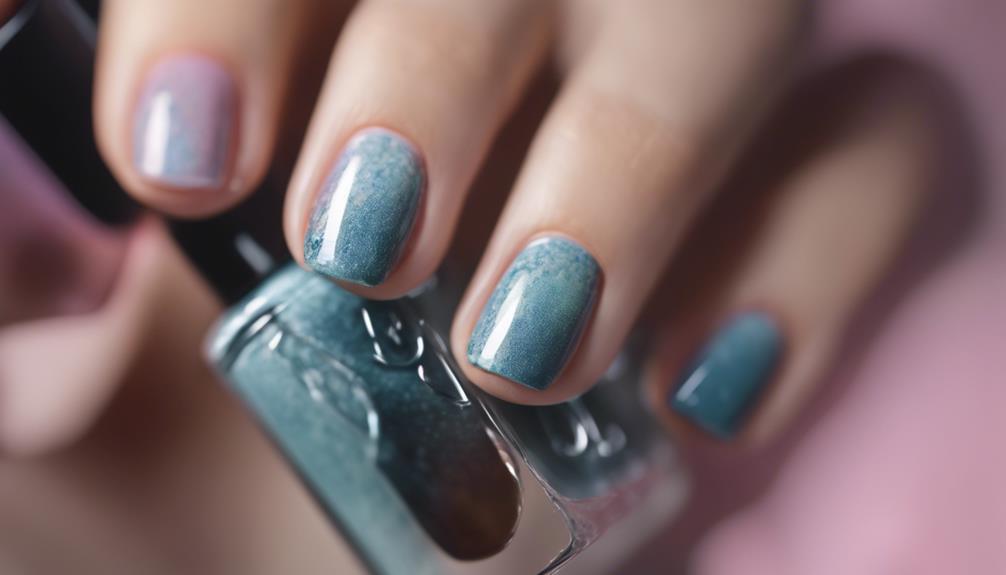
If you skip curing gel nail polish properly, you might notice the color fading quickly and the texture feeling rough. Additionally, the polish could start chipping easily, leading to a less-than-desirable manicure. It's essential to follow the curing steps to maintain the color vibrancy and smooth texture of your gel nails.
Color Fading Quickly
Not curing gel nail polish properly may lead to the color quickly fading and changes in texture. When the gel polish is not adequately cured, it can result in the color fading prematurely, impacting the overall appearance of your manicure. Additionally, texture changes may occur, leaving your nails feeling rough or uneven. To avoid these issues, make sure to cure each layer of gel polish correctly by following the manufacturer's instructions and using the appropriate curing times. Here are four key points to consider:
- Inadequate curing can cause the color to fade faster than expected.
- Changes in texture may lead to a rough or uneven surface on your nails.
- Following proper curing procedures is essential for maintaining the longevity of your gel manicure.
- Ensure each layer of gel polish is cured thoroughly to prevent color fading and texture changes.
Texture Feels Rough
Improperly curing gel nail polish can not only lead to color fading quickly but also result in a rough texture that affects the overall appearance of your manicure. When the gel polish is not properly cured, it can remain sticky and never fully harden, leading to a rough and uneven texture on the nails. This rough texture not only feels uncomfortable but also detracts from the smooth and glossy finish that gel manicures are known for. To maintain the desired smooth texture, ensure that each layer of gel polish is adequately cured under the UV or LED lamp. Here is a table highlighting the differences between properly and improperly cured gel nail polish:
| Aspect | Properly Cured Gel Nail Polish | Improperly Cured Gel Nail Polish |
|---|---|---|
| Texture | Smooth | Rough |
| Appearance | Glossy | Dull |
| Durability | Long-lasting | Prone to chipping |
| Feel on Nails | Comfortable | Uncomfortable |
Polish Chips Easily
For a longer-lasting gel manicure, ensuring proper curing is essential to prevent polish chips and maintain the original color and texture. If your gel nail polish chips easily, it can be due to improper curing methods. Here are some reasons why your polish may chip:
- Incorrect Curing Time: Not following the recommended curing time can lead to incomplete drying, causing chips.
- Inadequate UV Exposure: Insufficient exposure to UV light during curing can result in a weak bond, leading to chipping.
- Skipping Base Coat: Skipping the base coat can cause the gel polish to lift from the nail bed, making it prone to chipping.
- Avoiding Top Coat: Forgetting the top coat reduces the protection of the color layer, making it more susceptible to chipping.
Increased Susceptibility to Damage
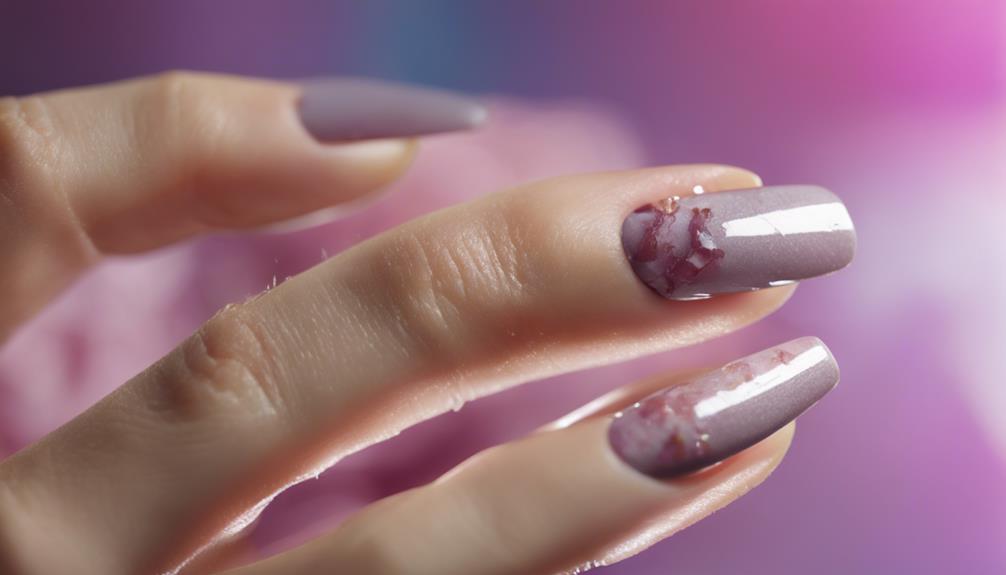
If you don't properly cure gel nail polish, you may find that your nails are more prone to damage. When gel polish isn't adequately cured, it can lead to a softer and less durable finish, making your nails vulnerable to chips, cracks, and peeling. This increased susceptibility to damage not only affects the appearance of your manicure but also the overall health of your nails.
Proper curing is essential for ensuring that the gel polish bonds securely to your nails, providing the long-lasting wear and protection it is designed for. Incomplete curing can result in a weakened bond, leaving your nails exposed to daily activities that can cause harm.
To prevent this issue, it's crucial to follow the manufacturer's instructions carefully and use the appropriate curing methods. Investing in a high-quality LED or UV lamp and allowing sufficient curing time can help maintain the integrity of your gel manicure, keeping your nails looking flawless and resilient. Remember, a well-cured gel polish not only enhances the longevity of your manicure but also safeguards the health of your natural nails.
Risk of Allergic Reactions
Neglecting proper curing of gel nail polish can elevate the risk of experiencing allergic reactions. When gel polish is not adequately cured, it can lead to adverse effects on your skin and nails. Here are four reasons why curing gel nail polish correctly is crucial:
- Allergic Reactions: Incomplete curing can cause the gel to remain slightly sticky, increasing the likelihood of allergic reactions when it comes into contact with your skin.
- Skin Irritation: Uncured gel polish can cause skin irritation, redness, itchiness, and even a burning sensation due to the chemicals present in the polish.
- Nail Damage: Improperly cured gel polish may not adhere well to the nail surface, leading to lifting, peeling, and ultimately damaging the natural nail underneath.
- Bacterial Growth: The sticky layer left after incomplete curing can attract dirt and bacteria, creating a breeding ground for infections that can affect both the nails and surrounding skin. It's essential to follow proper curing techniques to minimize these risks and keep your nails healthy and beautiful.
Tips for Proper Gel Polish Curing
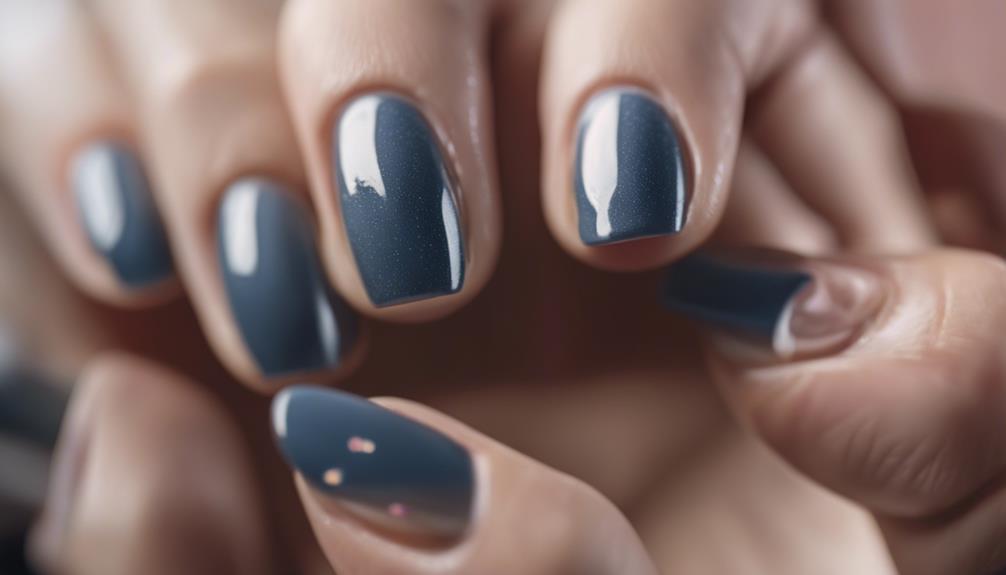
Properly curing gel nail polish is essential for ensuring long-lasting and flawless results. To achieve the best outcome, consider the following tips:
| Tip | Description | Benefits |
|---|---|---|
| Use thin layers | Apply thin layers of gel polish to ensure even curing and prevent overheating. | Prevents uneven curing and promotes durability. |
| Avoid over-curing | Follow the recommended curing times to prevent over-drying or damaging the nails. | Helps maintain the integrity of the natural nail. |
| Invest in quality lamp | Use a high-quality LED or UV lamp to ensure proper curing of the gel polish. | Enhances the longevity and shine of the manicure. |
| Seal the edges | Seal the free edges of the nails with gel polish to prevent peeling and chipping. | Extends the lifespan of the gel manicure. |
| Proper removal | Ensure to remove gel polish correctly using acetone or professional remover. | Prevents damage to the natural nail bed. |
Frequently Asked Questions
Can I Apply Another Layer of Gel Polish Over Uncured Gel Polish?
When you're considering adding another layer of gel polish to uncured gel, it's like building a house on shaky ground. The layers won't bond properly, leading to a manicure disaster. Always cure each layer for stunning nails.
Will Uncured Gel Polish Damage My Natural Nails?
Leaving uncured gel polish on your natural nails may lead to issues like peeling, chipping, and potentially weakening your nails. It's important to follow proper curing steps to ensure a durable and long-lasting manicure.
Can Uncured Gel Polish Cause Skin Irritation or Burns?
When you leave gel polish uncured, it can lead to skin irritation or burns due to the chemicals not properly setting. Ensure you cure your gel polish correctly to avoid any discomfort or potential harm.
Is It Safe to Remove Uncured Gel Polish With Acetone?
When removing uncured gel polish with acetone, proceed cautiously. Acetone can effectively break down the gel, but it may still irritate your skin if not rinsed off promptly. Prioritize safe practices to prevent any potential discomfort.
How Long Does It Take for Uncured Gel Polish to Fully Harden?
You're eager for those nails to set. Uncured gel polish needs about 30 seconds to harden under a UV or LED lamp. Any less, and you're left with a squishy mess. Patience, dear innovator!


